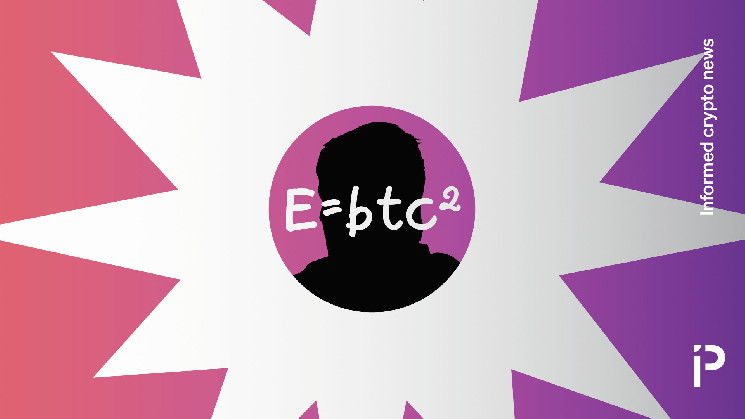MicroStrategy (NASDAQ:MSTR) was yesterday’s most-traded stock on US stock markets — and will post similarly spectacular numbers today.
Opening for trading 13% higher than yesterday’s close, within an hour MicroStrategy had turned over 30 million shares of volume, dwarfing its full-day average of 19 million.
The company owns 331,200 bitcoins worth over $32 billion and could be buying more during today’s session. As of mid-morning, its market capitalization was $103 billion — a 3.3 multiple on its bitcoin holdings.
The company has announced financing to purchase tens of billions of dollars more.
Behind these numbers is a massive, non-public market for privately negotiated share offerings and corporate debt.
MicroStrategy’s acquisition of bitcoin is fueled by leverage. It has two primary instruments for raising capital: selling shares or bonds. Below is the context to understand the math behind these two instruments as they apply to MicroStrategy today.
MicroStrategy’s curiously accretive dilution
Selling shares is straightforward and as old as Wall Street itself. Like any public company, MicroStrategy has the right to issue and sell new stock, diluting the equity ownership of prior shareholders.
Typically, share issuances by a company dilute shareholders and immediately decrease the share price. Mathematically, more supply with unchanging demand results in a lower price.
MicroStrategy, however, has a unique purpose for dilution which, at least in recent history, hasn’t crashed prices.
MicroStrategy uses basically all proceeds from these issuances to purchase bitcoin. Rather than working capital like selling, general, and administrative that investors tend to discount for short-term valuation, CEO Michael Saylor is simply acquiring another asset with all post-fee proceeds from the dilution.
This transfer of capital — the money raised from dilution deposited into the corporation’s bitcoin treasury — has convinced shareholders to not have their typically bearish reaction to MicroStrategy’s dilution. They call it “accretive dilution.”
Underscoring this point, consider MicroStrategy’s post-market announcement on October 30 of $21 billion in immediate share dilution plus tens of billions in long-term dilution via convertibles.
Prior to that announcement, the firm’s market capitalization was $50.1 billion. Normally, a 40-80% dilution announcement would have caused an immediate crash. However, shares actually closed the following day less than 1% lower and have subsequently rallied.
Even after adjusting for dilution and outstanding convertible obligations, MicroStrategy has actually increased bitcoin holdings per share.
This is possible because MSTR trades at a multiple to its bitcoin holdings. Funding this premium are corporate financiers: bond traders.
Read more: MicroStrategy investors cheer bitcoin ‘yield’ — but few read fine print
Zero coupon bonds and bullish mania
MicroStrategy’s second strategy for raising capital is a traditional form of leverage: debt. Rather than immediately diluting the equity of shareholders by selling shares, corporations can sell bonds — receiving money in exchange for future interest and principal repayments.
MicroStrategy has an extraordinary number of outstanding bonds with a variety of terms, most of which financed purchases of bitcoin. This strategy has performed well with the price of bitcoin at all-time highs.
It has also performed for lenders who, after bitcoin’s rally, are confident that they will receive their interest and principal payments from a progressively well-capitalized MicroStrategy.
Its default risk diminishes the higher bitcoin rises.
Some lenders are even foregoing interest payments altogether, with coupons on a multi-billion dollar round recently lowered to 0%. For these lenders, their compensation for the opportunity cost of their relinquished capital and default risk is only one thing: the right to convert.
Specifically, almost all bonds that MicroStrategy has sold contain a right to convert the bond into common stock. At various times and strike prices, rather than repayment in cash, bondholders may choose to simply forego repayment and accept MSTR shares instead.
Most bonds are similar to an at-the-money call: the future right to acquire stock at the current monetary value of that stock.
Normally, this type of call option would cost a premium because this power is obviously valuable if the stock rallies before that option expires. In the case of MicroStrategy bonds, however, the cost of this call-like privilege is free.
Rather than paying a premium to buy the call, the bondholders simply “pay” in the opportunity cost of their capital and accept the unlikely risk of default.
Read more: Is retail back or is MicroStrategy only pumping the price of bitcoin?
Because MicroStrategy and bitcoin have both been rallying in recent weeks, everyone is making money: MicroStrategy, Saylor, common shareholders, and bondholders.
If the trade turns, however, the terms of various bond issuances could come to haunt the enterprise.
Generally speaking, and unlike its bond issuances in the early years, MicroStrategy bonds aren’t collateralized. Unsecured by bitcoin, bondholders simply accept the company’s promise to repay despite not possessing bitcoin or other collateral as assurance.
This affords Saylor more flexibility in how he may raise capital to satisfy his debt obligations in the future if the price of MSTR or bitcoin declines substantially.
 protos.com
protos.com
